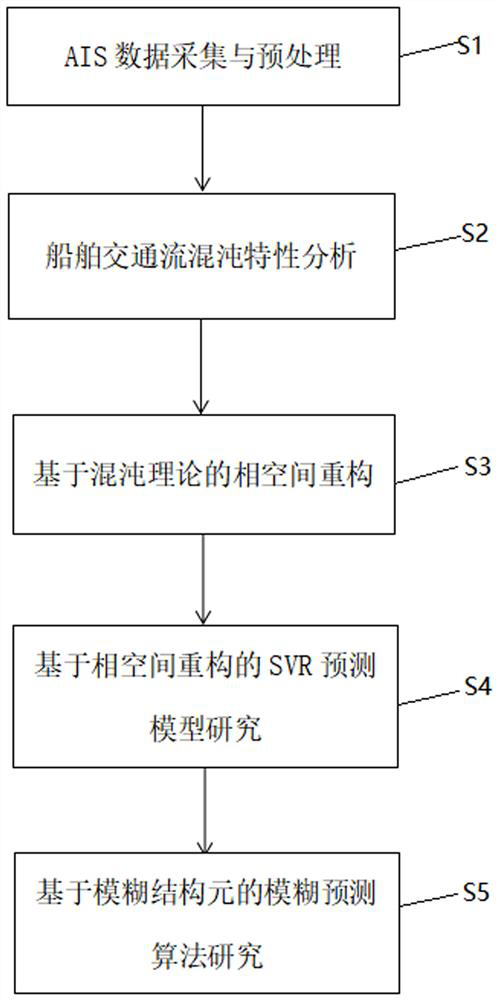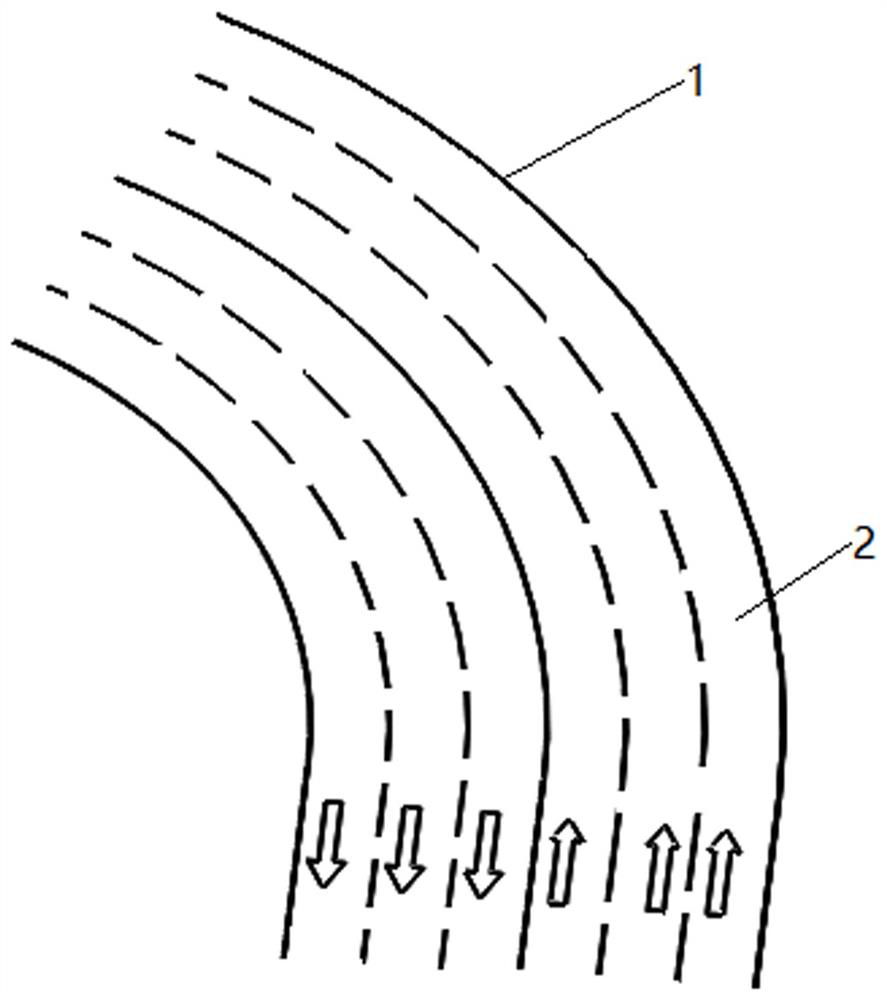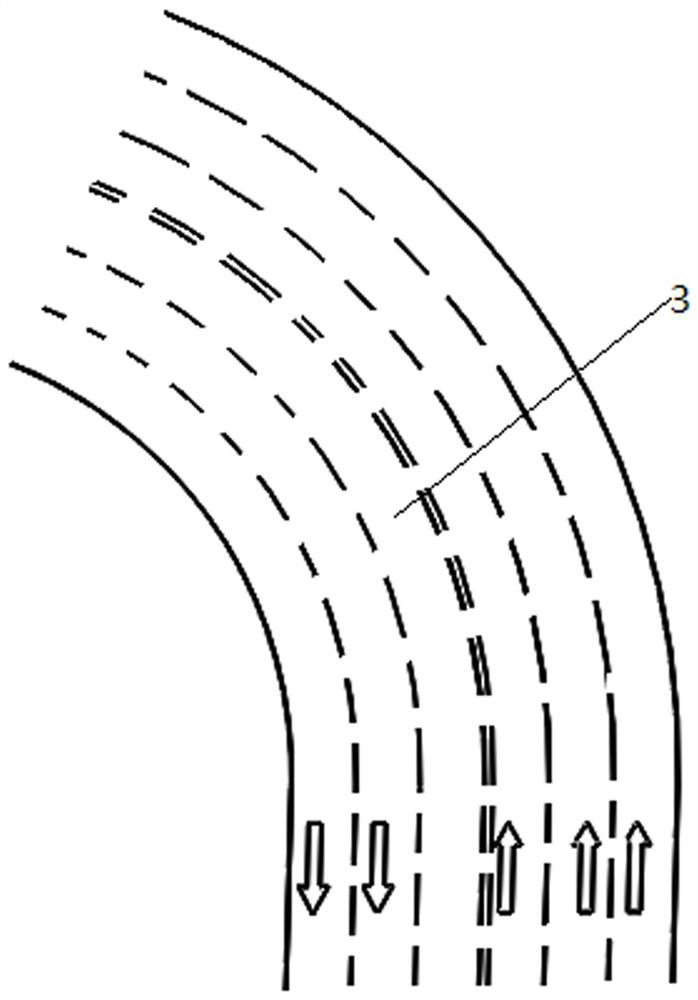A Fuzzy Forecasting Method of Ship Short-term Traffic Flow Based on Chaos Theory
A short-term traffic flow, fuzzy prediction technology, applied in the direction of ship traffic control, traffic control system, instruments, etc., can solve the problems of large fluctuation of ship traffic flow, not in line with the actual situation of ship movement, etc., to improve the accuracy of prediction. Effect
- Summary
- Abstract
- Description
- Claims
- Application Information
AI Technical Summary
Problems solved by technology
Method used
Image
Examples
Embodiment 1
[0045] Such as figure 1 and figure 2 As shown, the present embodiment provides a fuzzy prediction method for short-term traffic flow of ships based on chaos theory, including the following steps:
[0046] S1. Construct a way of assigning navigation belts, divide the navigation belt into two sub-navigation belts with the opposite and equal navigation bandwidth through the navigation dividing line, and each sub-navigation belt is divided into three virtual navigation lanes; collect the MMSI of each ship Code and real-time latitude and longitude, channel speed difference, and occupancy rate AIS data, and make preprocessing analysis on the changing trend of traffic flow factors such as ship position, ship trajectory, ship direction and ship speed; The AIS data of the speed difference of different flight paths and the speed difference of different flight paths on different sub-airways, on the same flight path, the ratio of the maximum value of the cumulative time course of a cert...
Embodiment 2
[0061] This embodiment is an improvement made on the basis of the first embodiment, specifically as follows: the AIS data collection for the channel differential speed in step S1 in the first embodiment is expanded from the original two aspects to five aspects.
[0062] Specifically, the five types of AIS data that collect ship channel speed differences are: the channel speed difference of ships before and after the same channel; the channel speed difference of adjacent ships between adjacent channels; the speed difference of different sections of the same channel , especially the channel speed difference between the straight section and the curved section; the channel speed difference of different ship types, especially the navigation speed difference of ships with different tonnages; the maximum and minimum navigation speed differences of ships of the same tonnage on the same channel. Comparing the data of the two kinds of waterway differential speeds in the first embodiment,...
Embodiment 3
[0064] This embodiment also makes improvements on the basis of Embodiment 1, specifically as follows: In Embodiment 1, the waterway corresponding to the maximum occupancy rate of the ship on the navigation belt is used as the waterway for the ship to navigate;
[0065] Specifically, here we will mainly explain the situation that the maximum lane occupancy rate of the ship is different. If the maximum lane occupancy rate of the ship is 90%-100%, it means that the ship is traveling on the same channel and there is no cross-lane navigation; If the lane rate is 50% and below, it is determined that the ship must have continuous cross-lane navigation; if the maximum lane occupancy rate of the ship is between 50% and 90%, the ship may have a single cross-lane navigation or continuous cross-lane navigation .
[0066] Classify the ship's navigation according to the lane occupancy rate, so that you can clearly understand the true navigation route and direction of the ship, reduce the sa...
PUM
 Login to View More
Login to View More Abstract
Description
Claims
Application Information
 Login to View More
Login to View More - R&D
- Intellectual Property
- Life Sciences
- Materials
- Tech Scout
- Unparalleled Data Quality
- Higher Quality Content
- 60% Fewer Hallucinations
Browse by: Latest US Patents, China's latest patents, Technical Efficacy Thesaurus, Application Domain, Technology Topic, Popular Technical Reports.
© 2025 PatSnap. All rights reserved.Legal|Privacy policy|Modern Slavery Act Transparency Statement|Sitemap|About US| Contact US: help@patsnap.com



